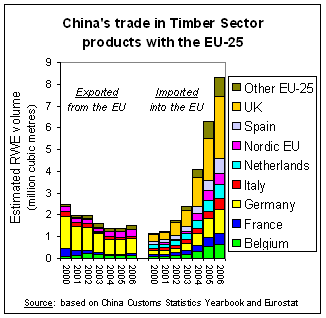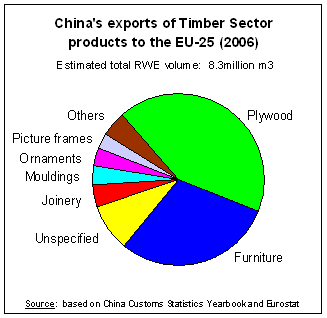|
|
||||||||||||||||||||||||||||||||||||||||||||||||||||||||||||||||||||||||||||||||||||||||||||||||||||||||||||||||||||||||||||||||||||||||||||||||||||||||||||||||||||||||||||||||||||||||||||||||||||||||||||||||||||||||||||||||||||||||||||||||||||||||||||||||||||||||||||||||||||||
|
|
||||||||||||||||||||||||||||||||||||||||||||||||||||||||||||||||||||||||||||||||||||||||||||||||||||||||||||||||||||||||||||||||||||||||||||||||||||||||||||||||||||||||||||||||||||||||||||||||||||||||||||||||||||||||||||||||||||||||||||||||||||||||||||||||||||||||||||||||||||||
|
The EU's FLEGT initiative |
||||||||||||||||||||||||||||||||||||||||||||||||||||||||||||||||||||||||||||||||||||||||||||||||||||||||||||||||||||||||||||||||||||||||||||||||||||||||||||||||||||||||||||||||||||||||||||||||||||||||||||||||||||||||||||||||||||||||||||||||||||||||||||||||||||||||||||||||||||||
|
Under its Forest Law Enforcement Governance and Trade "FLEGT" initiative, the EU has set out to negotiate Voluntary Partnership Agreements "VPAs" with each of five countries - Cameroon, Gabon, Ghana, Indonesia and Malaysia. Under a typical VPA, the EU would allow the import from the partner country of wood-based products irrespective of their legality except for designated products. Those designated products would only be allowed entry into the EU if accompanied by a certificate confirming that their supply chain is sufficiently legal - irrespective of whether the forest from which such products derive is not the partner country. The designated products should include (as a minimum) logs, sawn wood, veneer and plywood. A partner country can propose to include other products in addition to those four. Notes and definitions about the terms and tables below are provided at the end of this webpage. Table 1 below shows that, during 2005, those four products accounted for between half and two thirds of the roundwood equivalent volume of wood-based products which EU member states imported from the five "Initial VPA" countries. The four products accounted for between one third and a half of the corresponding import value. Table 1
- The share of "Basic VPA" products in EU member states' wood-based
product imports from "Initial VPA" countries (2005).
Table 2 below shows that, during 2005, seven EU member states each accounted for roughly 10%-15% of the EU's imports of those four products from those first five countries - by both roundwood equivalent volume and import value. Table 2
- EU member state imports of "Basic VPA" products from "Initial
VPA" countries (2005).
Table 3 below shows that, during 2005, the imports of those four products from those five countries accounted for a mere 10%-20% of the EU's imports of wood-based products from those countries which supply most of world trade in Illegal Timber. That table also shows that the corresponding percentage is substantial for only seven EU member states, and that that percentage for those member states tends to be 10%-30%. Thus, the FLEGT initiative, even if any VPA's are ever satisfactorily implemented, will address a small fraction of the EU's imports of Illegal Timber. None are likely to be operating until 2009 at the very earliest (when even less forest will remain and when local populations will be further impoverished as a result of continued over-exploitation of their forest - increasing the risk of fundamentalism and violence against the expanding ethnic chinese diaspora as an unfortunate proxy for the ethnic chinese businesses which seem to account for an increasing share of world trade in Illegal Timber). Table 3
- EU member state imports of "Basic VPA" products from "Initial
VPA" countries as a proportion of those EU member states' imports
of wood-based products from "High Risk" countries.
Table 4 below shows that, during 2005 and in terms of roundwood equivalent volume, Russia supplied two thirds of the EU's imports of wood-based products from high risk countries. It also shows that, during 2005 and in terms of import value, China supplied a greater quantity of such wood-based products than the EU imported direct from tropical countries. Whereas seven EU member states each accounted for 10%-15% of the total which was imported into the EU direct from tropical countries, Finland and the UK imported much more from Russia and China respectively than any other EU member state. Table 4
- EU member state imports of "At Risk" wood-based products from
selected countries.
The EU's imports of wood-based products from China are increasing rapidly - and this is driving up the EU's (and particularly the UK's) imports of Illegal Timber. During 2006, basic FLEGT products accounted for somewhat less than half of the estimated RWE volume of those EU imports. Click here for further information about China in relation to EU imports of High Risk timber Table 5 below indicates the potential for the EU FLEGT initiative to influence governance in the export-oriented wood-based product industries not only of the five initial VPA countries but also in other high risk countries. It likewise indicates the leverage which China, Japan and the USA have in either supporting or handicapping the EU's slow and modest (but nevertheless laudable) efforts. Table 5-
Importing countries share in the wood-based product exports of
"High Risk" countries - in terms of roundwood equivalent
volume (total 280 million cubic metres - 2005).
China accounts for the majority or the roundwood equivalent volume which is exported from most tropical countries other than those listed in Table 5. China may soon overtake the USA as the primary destination for the Illegal Timber exports from some south American countries - particularly as raw material for China's flooring and furniture exports to the USA and the EU. It seems reasonable to conclude that the EU's current VPAs are likely to have little impact on global trade in Illegal Timber. They would have much more impact if and when the EU prohibits wood-based product imports from China that are not credibly certified (whether as part of a legality licensing agreed by the EC and government of China or by a scheme equivalent to that of the FSC). However, even then, their impact in some countries might be small unless others notably the USA (which accounts for about half of China's timber exports) follow suit soon afterwards (or, preferably, before). The VPAs could provide a useful basis for improving the credibility of CITES certificates (particularly in relation to the assessment of legality) - an issue of some importance given the number of species which should be listed in CITES and the somewhat unsatisfactory implementation of CITES procedures in relation to the four commercial species currently listed (particularly Gonystylus spp. and Swietenia macrophylla). The EU's efforts might be seen by some as hypocrisy until governance in the timber industry within the EU is demonstrably improved - particularly in states which have acceded to the EU since 2004.
Based on Eurostat (CN8), China Customs Statistics Yearbook, Japan Customs, USITC Dataweb and other official sources (see http://www.globaltimber.org.uk/RWEvolume.htm - which also suggests conversion factors). "At Risk" wood-based products are defined here as wood-based products (supplied from High Risk countries) other than particleboard, fibreboard, rubberwood, (for Brazil only) coniferous wood, pulp and paper, and (for Brazil and Congo (Brazzaville) only) pulpwood. Importers can choose anything from FSC-certified products to Illegal Timber subject to availability in the grades required. The cheaper the supply, the more likely it is to be illegal. "High Risk" countries are defined here as the top ten non-EU countries from which some of the largest quantities of Illegal Timber are believed to be exported: - Brazil, Cameroon, China, Congo (Brazzaville), Gabon, Ghana, Indonesia, Ivory Coast, Malaysia, and Russia. "Initial VPA" countries are defined here as the five countries with which the EU has initially sought Voluntary Partnership Agreements: - Cameroon, Gabon, Ghana, Indonesia, and Malaysia. "Basic VPA" products are defined here as products which, as a minimum, would be covered by a Voluntary Partnership Agreement with the EU: - logs, saw wood, veneer and plywood. |
||||||||||||||||||||||||||||||||||||||||||||||||||||||||||||||||||||||||||||||||||||||||||||||||||||||||||||||||||||||||||||||||||||||||||||||||||||||||||||||||||||||||||||||||||||||||||||||||||||||||||||||||||||||||||||||||||||||||||||||||||||||||||||||||||||||||||||||||||||||
|
Copyright
globaltimber.org.uk
|
||||||||||||||||||||||||||||||||||||||||||||||||||||||||||||||||||||||||||||||||||||||||||||||||||||||||||||||||||||||||||||||||||||||||||||||||||||||||||||||||||||||||||||||||||||||||||||||||||||||||||||||||||||||||||||||||||||||||||||||||||||||||||||||||||||||||||||||||||||||


